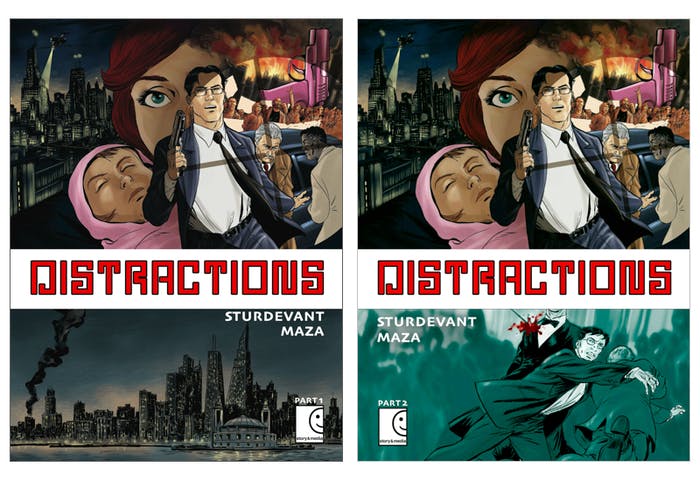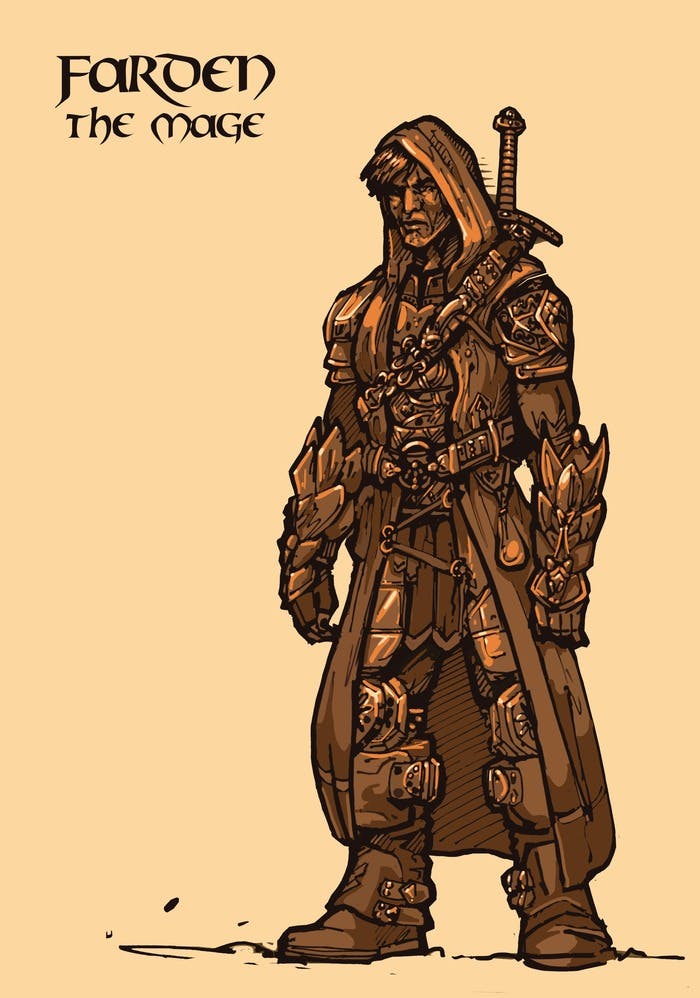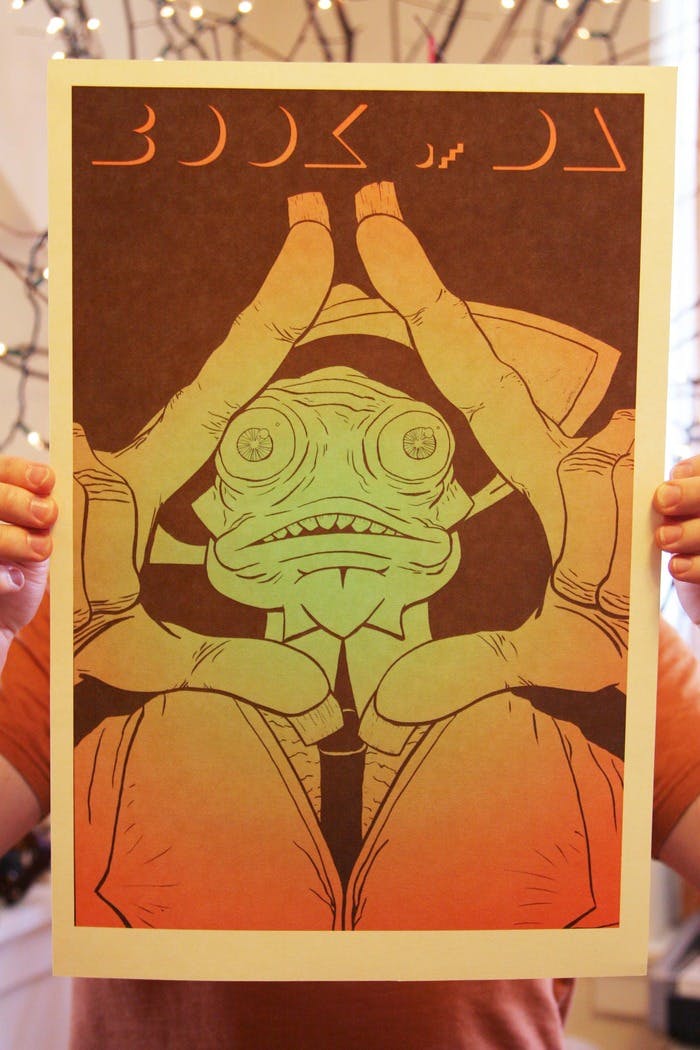
Distractions has the ability to appeal to readers of all ages. A graphic novel about a former bodyguard who is forced to face the prospect of parenthood, younger readers may be compelled by its action sequences and storytelling, while older audiences will likely appreciate its noir backdrop and attention to life’s biggest responsibilities.
Yet if it wasn’t for Kickstarter, Distractions would never have seen the light of day.
In July 2012, creator Wes Sturdevant raised $3,000 on the crowdfunding platform. That might not seem like much, but for some independent publishers, it’s the difference between a dream and reality.
Dismayed by the usual publishing routes, more and more independent artists like Sturdevant are turning straight to their fans for assistance. According to Publishers Weekly, over 100 graphic novel or comic book projects have been successfully funded on Kickstarter, with 25 of them earning at least $10,000 or more in funding. Rich Burlew’s blockbuster campaign for The Order of the Stick earned over $1 million.
For Sturdevant, success came from a deep understanding of how Kickstarter works.
“Spend lots of time browsing through Kickstarter projects,” he said. “Look at the projects that are similar to your project, both the successful and the unsuccessful ones. Think long and hard about what separates them. Emulate the ones that work.”
Sturdevant also found it helpful to include samples of Hermes, his previous collaboration with illustrators Maza. “It served not only as an example of our ability to finish a project,” he said, “but showed off Maza’s talent (enhanced by wonderful coloring by Ozren Miždalo) and showed both of our creative ranges.”
Given the rising influence of Kickstarter, the Daily Dot reached out to other successful graphic novelists for insight.
“A Kickstarter is a full-on marketing exercise, demanding attention almost 24/7 whilst your project is live,” noted Ben Galley, who reached his £5,000 goal for The Written, the first book his fantasy comic series Emaneska, this month.
“Be bold and market your project as much as you can throughout its duration. Ask favours, call in debts, engage with as many people as you can to insure maximum spread. Then, rely on the attractiveness of your project’s offering for pledges.”
It’s not always as easy as it sounds.
“The first thing to understand is that it isn’t a simple case of uploading a project and watching the money roll in,” he explained. “You should be prepared for a slow start, or for times that the funding may plateau for no apparent reason. It’s important not to be disheartened.”

Sample art from The Written, the basis for Emaneska.
Photo via Kickstarter
Earlier this month, author Matt Bryan raised more than $17,000, well over his $3,000 goal, for his graphic novel Book of Da, coauthored by Mike Mccubbins. He said creators should be well-prepared even before a campaign goes live on the site. .
“Give yourself a good few months at least to work up to your campaign kick-off,” Bryan suggested. “This will allow you time to edit and re-edit your page, nail down your rewards, make a video, take some pictures, and generally spruce things up all before you submit your project and wait for them to approve it, as well as confirm your identity.”

Book of Da posters were offered as incentives for certain backers.
Sturdevant, Galley, and Bryan did not rely on any sort of established formula or strategy to realize their respective successes. Instead, each creator relied on a mix of research, incentives, and common sense to tap into the combined generosity of their backers.
“More importantly, include a human element,” he stated. “I believe people like to see a personal story behind a project, as it gives them something to believe in, exhibits a drive, and let’s them engage on a personal level.”
Persistence is key, but so is showing respect and appreciation.
“Be prepared to ask for help more than once,” Sturdevant suggested. “I felt like I was riding a thin line between being brave enough to ask, and begging to the point of annoyance. But you can’t cross that line. Be prepared to be humble, but not pathetic.”
Photos via Kickstarter


